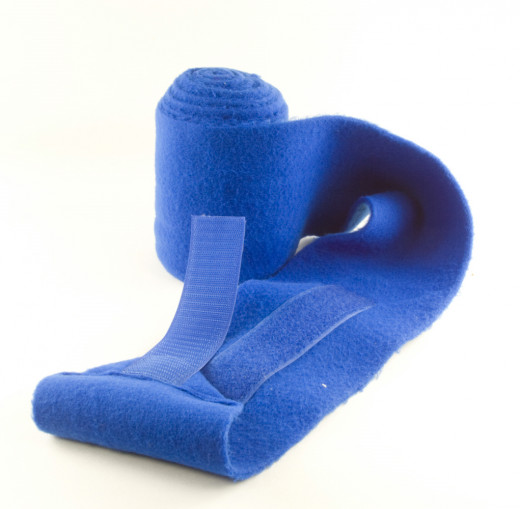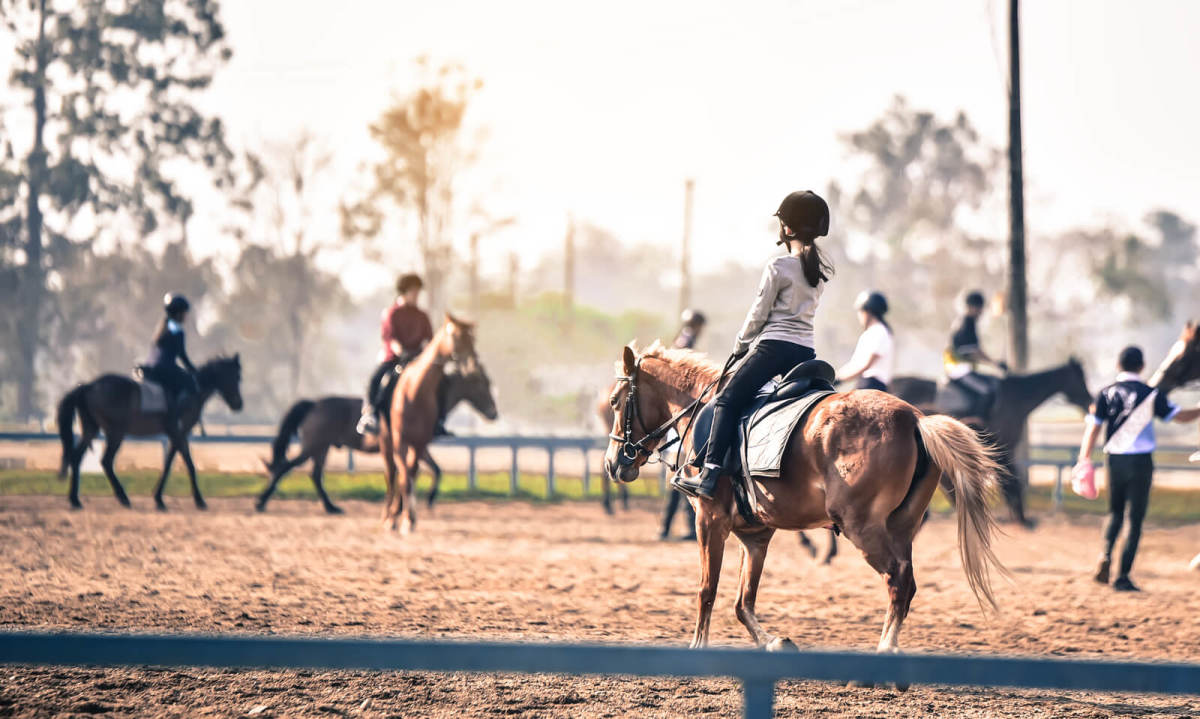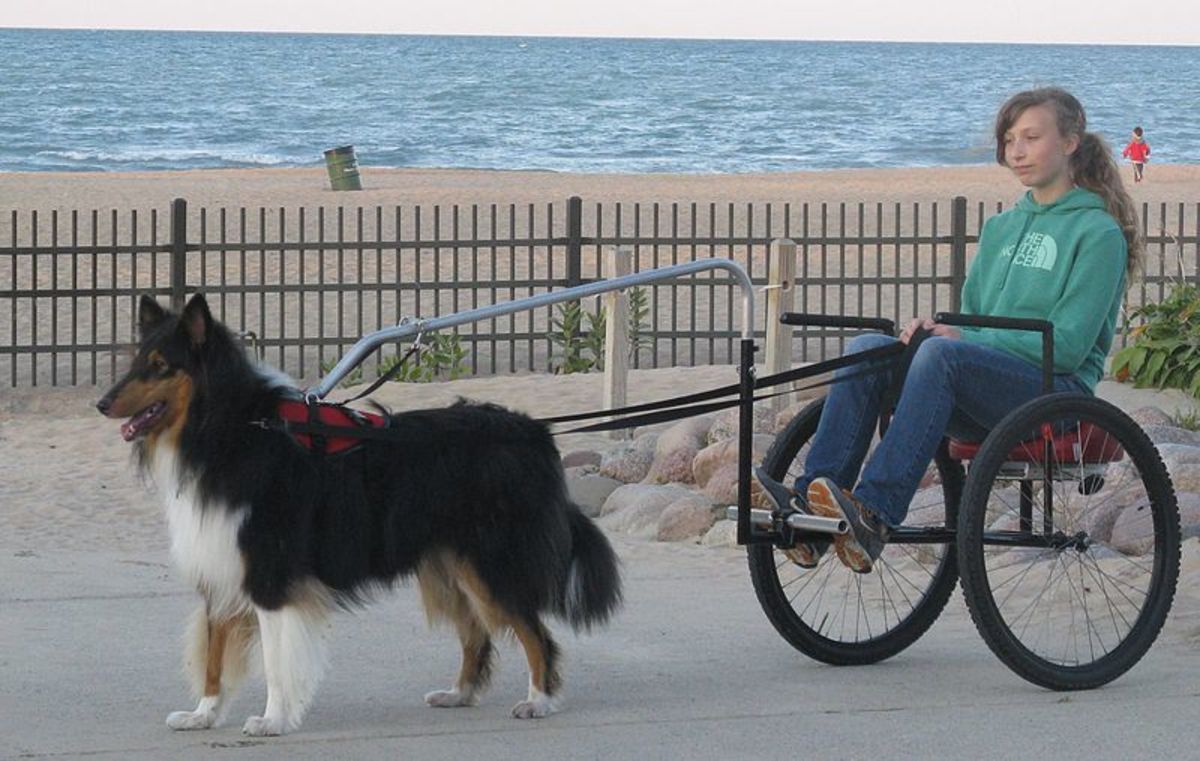How to Apply Polo Wraps to a Horse

The polo wrap is the easiest and most commonly used equine leg wrap.
When used correctly, polo wraps can:
- look professional,
- make it easier to observe the horse's movement,
- warm up the tendons and ligaments in the horse's legs,
- and provide a little bit of protection against nicks and abrasions to the horse's lower limbs.
Contrary to tradition, studies have shown that the polo wrap offers negligible support to the horse's tendons and joints. Incorrectly applied polo wraps, as with any horse wrap, could cause serious damage, even permanent damage, so always practice wrapping with an experienced equine professional.
How to Roll Polo Wraps
Always unroll and start over with new polo wraps. In the factory, they are not rolled so that the velcro will be on the correct side when you finish the wrap.
1) Lay the velcro onto itself.
2) Hold the wrap from the velcro end, with the velcro facing away from you.
3) Begin rolling the bandage away from you, so that the velcro is hidden inside the roll.
4) Continue rolling all the way down the bandage, keeping the material taut so that the finished result is tightly wrapped, not loose and messy. A loose polo wrap is difficult to handle as you try to wrap your horse. Push the bandage up against a wall or against your leg if you need to.
5) Tuck a corner of the wrap back into the edge to keep it from unravelling.
How to Make Your Own Polo Wraps
How to Put on Polo Wraps
Make sure that the horse is secured on cross ties, or held by an experienced horse handler.
Wrapping places you in avery vulnerable position. Never wrap a horse with which you are unfamiliar and always stay on your toes-- literally!
Body Position for Wrapping
Stand about six inches from the side of the horse's leg and squat down, bending both your hips and knees. Keep your balance, and always be ready to move quickly.
- Never sit on the ground next to the horse. The horse could move, for whatever reason, and you cannot move out of the way if you are sitting down.
- Never squat in front of the horse's knee or behind the horse's hock, for obvious reasons.
- Don't simply bend from the hips unless you have knee problems and cannot squat. Bending over places you at an awkward position, with your face the first to be hit by the horse's leg or hoof.
Steps for Putting on a Polo Wrap
- The roll always faces out away from the horse's leg, never in towards it.
- Always begin on the inside of the horse's leg, and roll the wrap around to the front of the leg, the cannon bone. If you are on the left side, the motion will be counterclockwise, if you are on the right side, the motion will be clockwise.
1) Place the exposed, short edge of the bandage on the inside of the horse's leg, directly in the middle of the cannon bone.
2) Hold the edge in place with one hand as you unroll the bandage over the front of the cannon bone, keeping a steady tension.
3) Keep less tension on the wrap as you bring it over the tendons.
4) Switch hands without dropping the roll, or losing the overall tension of the bandage.
5) Once one full circle has been made, repeat steps 2 and 3, rolling the the bandage down towards the fetlock. Each revolution should be about 1.5 inches below the last.
6) Once you reach the fetlock, continue evenly spacing each revolution, at a slight angle so that the bandage cups the bulge of the joint.
7) Start working your way back up the leg, with even revolutions, pulling the bandage taught only over the front of the cannon bone, never the tendons.
8) If the length of the wrap is appropriate to the horse, and you wrapped with proper tension and even spacing, you will run out of material as you reach the knee joint. If there is extra, simply start wrapping back down the leg. Never continue over the knee.
9) Finish by attaching the velcro. Ideally, the velcro should be on the outside of the leg, not on the inside of the leg.
*It is of the utmost importance that you never wrap too tightly, or place uneven stress on the horse's tendons. Serious issues, and permanent damage is caused by ill wrapped polo bandages.*
Using Tape
Some riders worry that the velcro is not enough to secure the wrap. To back up the velcro, use masking tape, in a spiral.
Never:
- Make a complete band of tape-- it could cut off circulation if it is too tight, or slips down the leg and becomes too tight.
- Use duct tape-- it won't always break when it needs to.
Warnings
- When you take off the wrap, the horse will want to move and stretch the leg because pressure is being released. Be ready and watch that the horse doesn't knock you over as you squat by his leg.
- Although one of the advantages of polo wraps is that they aid in warming up the horse's legs, making them more flexible and limber, it also prevents the leg from cooling when it reaches high temperatures.This heat could cause degeneration of the tendons. It is recommended to cold hose the horse's legs after a wearing bandages or boots during exercise.
- Any support that the wrap might offer the horse (although more and more people believe that it doesn't) will ultimately weaken the leg, because his body begins to rely on the support instead of gaining the necessary strength.
- Never turn a horse out in polo wraps, because the longer the wrap is on the horse, the more chance of damage to the horse's tendons. They can also come undone and be ruined or lost in the pasture. Use boots if you are concerned about your horse injuring his legs in the pasture.
- Never leave wet polo wraps on your horse!
Zebra Wraps
Washing Polo Wraps
Polo wraps are made out of a stretchy fleece material and is conveniently machine wash and dryer safe.
You can usually use your wraps several times before they need to be washed. Make sure to pick off any shavings, etc., before using the wrap.
Be careful that no dirt and grit comes between the wrap and the horse's skin because he may develop sores.
It's a good idea to put the wraps in some sort of a laundry bag so that they don't become entangled in the washing process.






